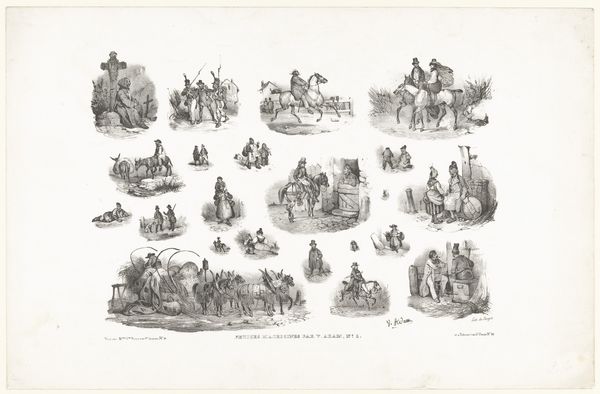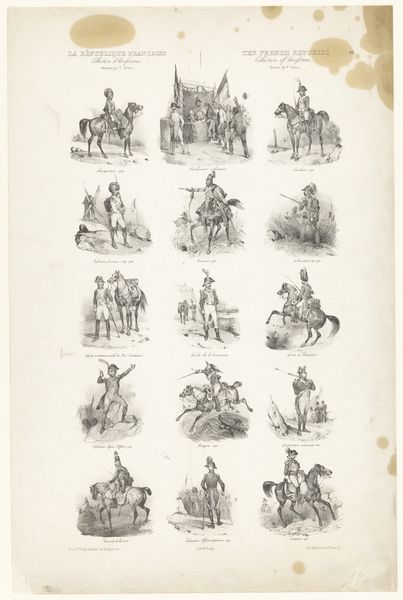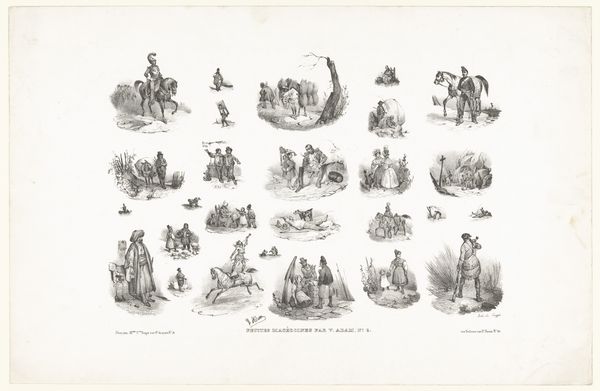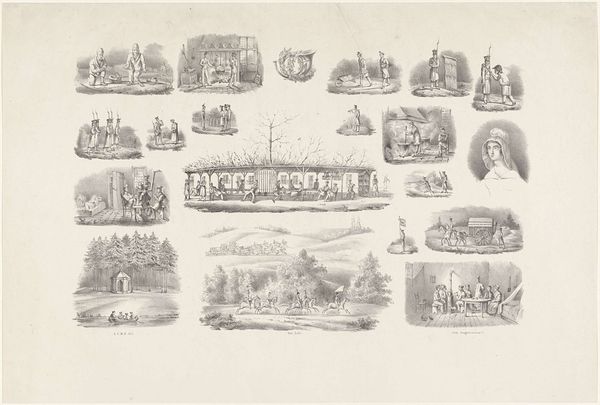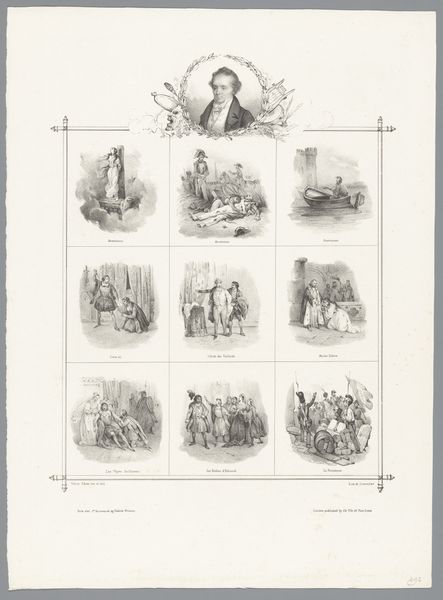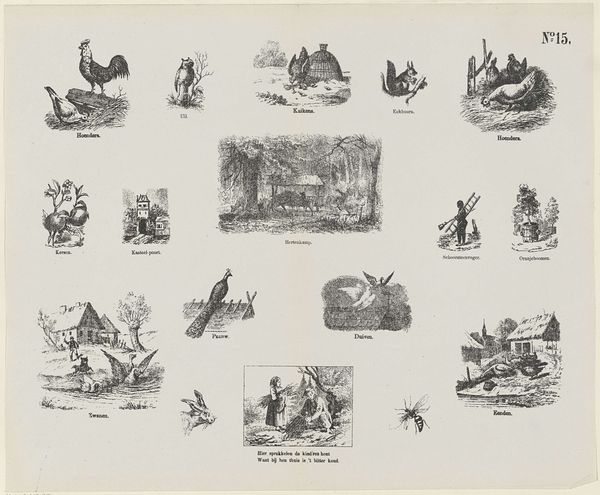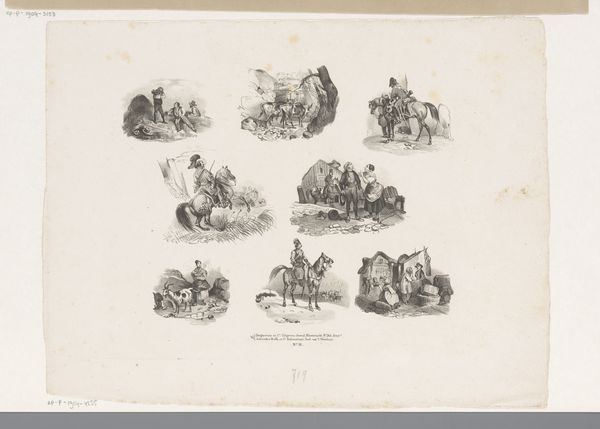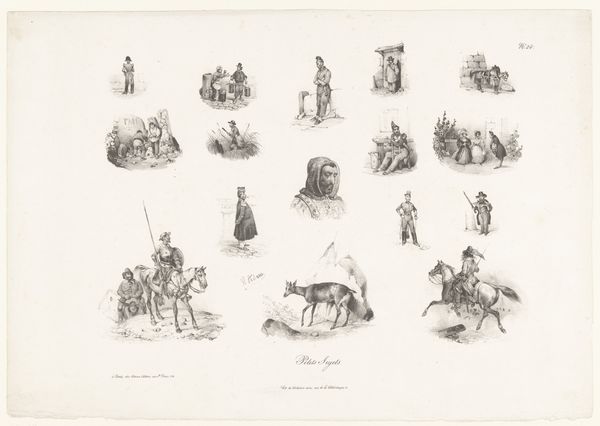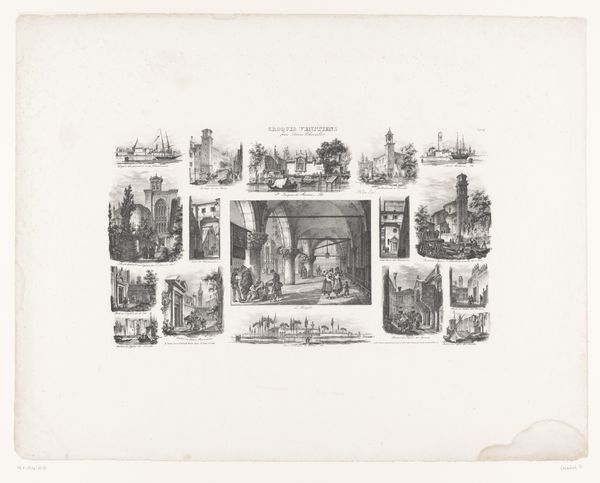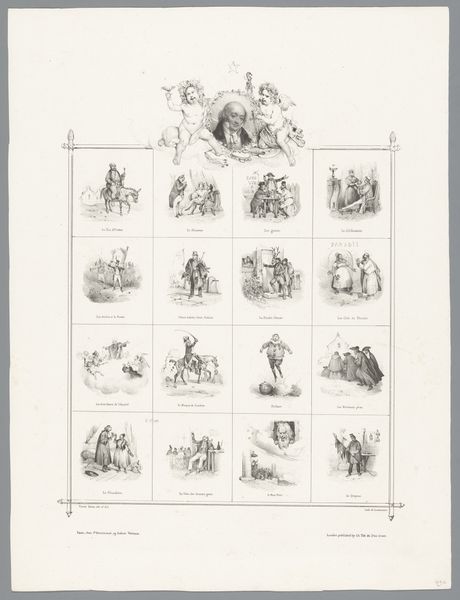
lithograph, print
#
lithograph
# print
#
romanticism
#
genre-painting
#
history-painting
Dimensions: height 321 mm, width mm
Copyright: Rijks Museum: Open Domain
Curator: Here we have a lithograph print created between 1832 and 1833 by Jean-Baptiste Arnout titled "Twaalf afbeeldingen van veldheren en soldaten," which translates to "Twelve images of generals and soldiers." Editor: Twelve vignettes, almost like a set of postage stamps. It projects a certain orderliness, but each scene seems rather melancholic, with muted tones and lonely figures. Curator: I see that initial observation and its mood entirely emanates from the piece’s formal characteristics: a tight composition with linear groupings. The limited tonal range certainly evokes a somber emotional tone. However, consider the political context of the Romantic era in France. These may represent nostalgic recollections of military prowess. Editor: The romantic idealization of military life... That seems plausible, though filtered through what seems a contemporary lens examining archetypes more broadly, from Napoleon himself to soldiers in various duties and nationalities, each staged almost identically, separated by minimal background details and labeled plainly below. It's a comprehensive typology of martial imagery. Curator: The artist leverages repetition and categorization—structuralist analysis shows that these recurring components emphasizes universalities embedded inside diverse embodiments. The recurring horse figure, and its implications... fascinating in regard to its implied force. Editor: True. It creates this visual taxonomy and emphasizes those characteristics these subjects supposedly embody. Also consider what exactly the French monarchy of the 1830's would have wished to convey: these lithographs offered the post-revolutionary and Napoleonic generation the illusion of its bygone political stability and, in addition, order itself. Curator: Very good point. These figures could reflect ideal archetypes to influence a society yearning for stability after massive social and political transformations. I was hyper-focused on composition and form! Thank you for the insights regarding reception and intent, both critical and easily lost on an initial read. Editor: And you have elucidated formal principles that I had overlooked in my enthusiasm for historical circumstances. A productive synergy of perspectives.
Comments
No comments
Be the first to comment and join the conversation on the ultimate creative platform.
